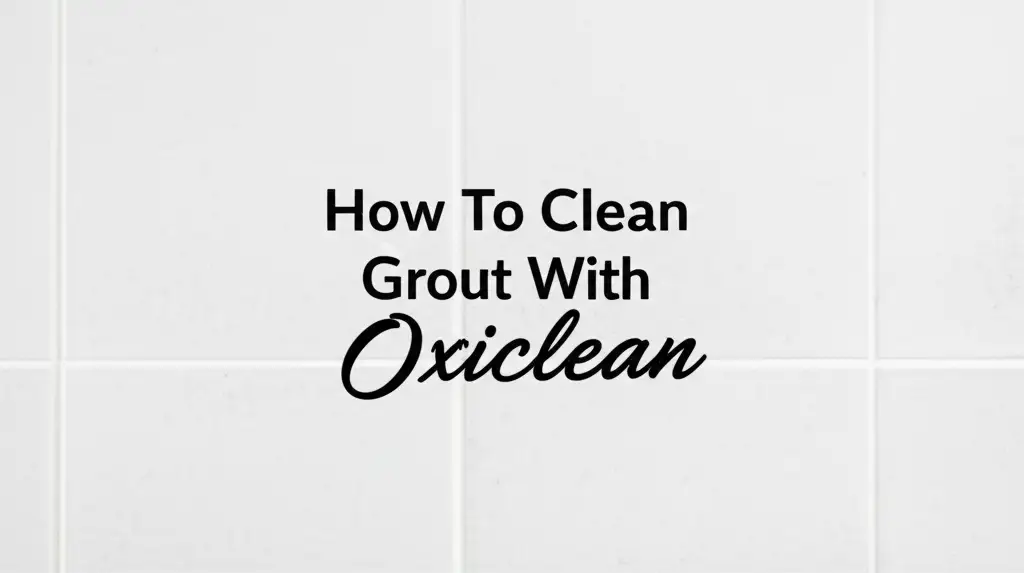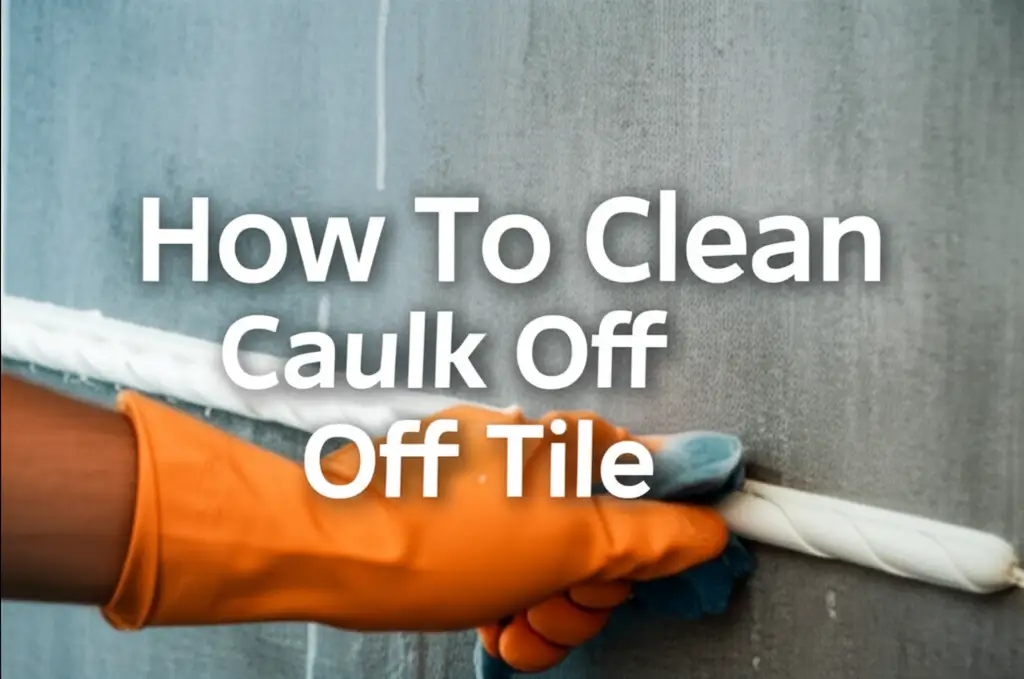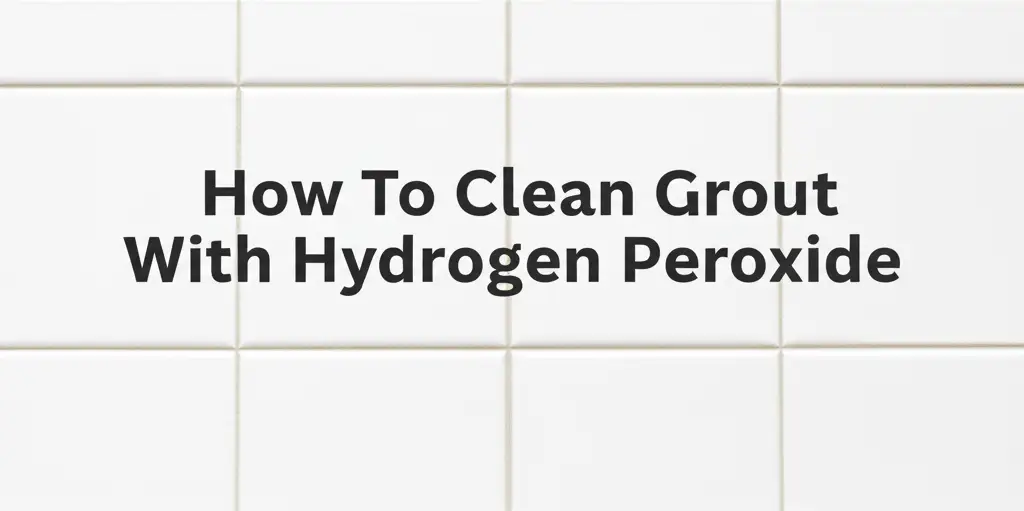· Home Cleaning · 14 min read
How To Clean Shower Tiles And Grout

Deep Clean Your Shower: How To Clean Tiles and Grout
A clean shower makes your bathroom feel fresh. But over time, shower tiles and grout gather soap scum, mildew, and hard water stains. This buildup makes your shower look dull and unhealthy. Many people wonder how to clean shower tiles and grout effectively. I understand the frustration of seeing dark grout lines or cloudy tiles.
This guide shares simple steps and methods to restore your shower’s shine. We will explore different cleaning solutions and techniques. You will learn how to prepare your shower, tackle tough stains, and maintain its cleanliness. My goal is to give you clear, actionable advice. Let’s make your shower sparkle again.
Takeaway
- Gather all necessary supplies before you start cleaning.
- Use everyday solutions like baking soda and vinegar for regular maintenance.
- Address tough mold and mildew stains with specific, powerful cleaners.
- Target hard water spots and soap scum with appropriate methods.
- Focus on deep cleaning grout lines for a truly spotless look.
- Maintain your clean shower with daily habits and proper sealing.
To effectively clean shower tiles and grout, first clear the shower area. Then, apply a suitable cleaning solution, such as a baking soda paste or hydrogen peroxide, to the surfaces. Allow it to sit, then scrub thoroughly with a brush or sponge. Finally, rinse well and consider sealing grout to prevent future buildup.
Getting Started: Essential Prep for Shower Tile Cleaning
Before you begin cleaning your shower tiles and grout, prepare the area. Proper preparation makes the cleaning process easier and safer. I always start by removing everything from the shower. This includes shampoo bottles, soaps, and bath toys. Clear surfaces allow you to clean every inch without obstruction.
Next, ensure good ventilation in your bathroom. Open a window or turn on the exhaust fan. Cleaning products can release fumes. Fresh air helps to disperse these fumes. This protects your lungs and makes the cleaning experience more pleasant. I always prioritize good air circulation.
Gather all your cleaning supplies before you start. This saves time and keeps you from stopping mid-task. You will need a stiff-bristled brush, a sponge, cleaning cloths, and rubber gloves. Different cleaning solutions may also be needed depending on the type of stains you have. Having everything ready helps you work efficiently.
It is also smart to test any new cleaning solution on a small, hidden area first. This prevents damage to your tiles or grout. Some cleaners can react differently with various materials. Testing ensures the solution is safe for your shower’s specific surfaces. I always recommend this step to avoid any surprises.
Everyday Solutions for Sparkling Shower Tiles and Grout
Many common household items work well for regular shower tile and grout cleaning. These solutions are gentle yet effective for daily or weekly maintenance. I often turn to these methods for a quick refresh. They help prevent major buildup.
Baking soda is a powerful natural abrasive and deodorizer. To use it, mix baking soda with a little water to form a thick paste. Apply this paste directly onto your tiles and grout lines. Let it sit for about 10-15 minutes. Then, scrub with a brush or sponge. This paste lifts grime and brightens surfaces. You can learn more about this method for a truly fresh bathroom by reading how to clean shower with baking soda.
White vinegar is another excellent natural cleaner, especially for soap scum and hard water stains. Its acidic nature helps dissolve mineral deposits. Mix equal parts white vinegar and water in a spray bottle. Spray the solution generously over your shower tiles and grout. Allow it to sit for 15-30 minutes. Be cautious when using vinegar on natural stone tiles, as its acidity can etch them.
For tougher spots, you can combine baking soda and vinegar. First, apply the baking soda paste. Then, spray the vinegar solution over the paste. The mixture will fizz, which helps to loosen dirt and stains. After the fizzing stops, scrub and rinse thoroughly. This combination is surprisingly effective for general cleaning.
Using dish soap can also cut through light grease and soap scum. Mix a few drops of dish soap with warm water in a bucket. Use a sponge or cloth to wipe down your shower surfaces. This simple solution works well for quick clean-ups between deeper scrubs. Regular use of these simple solutions keeps your shower looking good with minimal effort.
Powerful Techniques for Removing Stubborn Shower Grout Stains
Stubborn stains like mold and mildew often cling to shower grout. These stains need stronger cleaning methods. I have found certain techniques work best for removing these dark spots. You can restore the clean look of your grout lines.
Hydrogen peroxide is a great option for killing mold and whitening grout. Pour hydrogen peroxide directly onto moldy grout lines. Let it sit for about 10-15 minutes. Hydrogen peroxide bubbles when it interacts with organic matter. This bubbling helps to lift the grime. Then, scrub with a stiff brush and rinse well. This method is effective and safer than bleach for many surfaces. For more details on using this powerful cleaner, check out how to clean grout with hydrogen peroxide.
For very dark or black grout, a mild bleach solution can be used. Mix one part bleach with ten parts water. Apply this solution to the grout lines with a cotton swab or a small brush. Let it sit for a few minutes, but do not let it dry. Then, scrub gently and rinse completely. Always ensure excellent ventilation when using bleach. Avoid mixing bleach with vinegar or other cleaners, as this creates dangerous fumes. If you have severely discolored grout, you might find additional advice on how to clean grout that has turned black.
Oxygen bleach, often sold as a powdered cleaner, is another effective choice. Mix it with water according to package directions to form a paste. Apply this paste to the stained grout. Allow it to sit for several hours or even overnight. Oxygen bleach works slowly but effectively to break down stains. Scrub and rinse thoroughly afterward. This method is gentler on many surfaces than chlorine bleach.
Steam cleaners offer a chemical-free way to remove tough grout stains. The hot steam penetrates porous grout, loosening dirt and killing mildew. Direct the steam nozzle along the grout lines. Then, wipe away the loosened grime with a cloth. This method is environmentally friendly and very effective for deep cleaning. I find steam cleaning particularly satisfying because you see instant results without harsh chemicals.
Battling Buildup: Hard Water and Soap Scum on Shower Surfaces
Hard water stains and soap scum are common issues in many showers. These buildups leave a dull film on tiles and can clog showerheads. I have effective strategies for tackling these specific problems. They help restore clarity and shine to your shower surfaces.
White vinegar is your best friend against hard water stains. These stains are mineral deposits, mostly from calcium and magnesium. Vinegar’s acidity dissolves these minerals. Spray full-strength white vinegar onto the affected tiles and glass. Let it sit for at least 15-30 minutes, or longer for severe buildup. Then, scrub with a non-abrasive sponge or brush. Rinse completely with water. You can find more targeted advice for glass surfaces in how to clean hard water stains on shower glass.
Lemon juice is another natural acidic option. It works similarly to vinegar but leaves a pleasant scent. Squeeze fresh lemon juice onto stained areas or use concentrated bottled lemon juice. Allow it to sit, then scrub and rinse. For light hard water spots, a cut lemon can be rubbed directly on the surface. This is a simple, refreshing way to clean.
For soap scum, which is a combination of soap, body oils, and minerals, dish soap can be surprisingly effective. Mix warm water with a generous amount of liquid dish soap. Apply this solution to the soapy areas. The surfactants in dish soap help break down the fatty components of scum. Scrub with a stiff brush or a scouring pad safe for your tiles. Rinse well.
Commercial cleaners specifically designed for hard water and soap scum are also available. Look for products containing ingredients like phosphoric acid or citric acid. Always follow the product instructions carefully. Ensure good ventilation when using these stronger chemicals. These products often work quickly on heavy buildup. For detailed advice on glass shower doors, consider reading how to clean soap scum from glass shower doors.
After cleaning, using a squeegee on glass and tiles after each shower can greatly reduce future buildup. This simple habit saves significant cleaning time later. I always recommend this small daily effort for long-term cleanliness.
Deep Cleaning Grout Lines: Strategies for a Spotless Look
Grout lines are often the dirtiest part of the shower. Their porous nature traps dirt, mold, and soap scum. Deep cleaning grout requires specific tools and techniques. I focus on these lines to achieve a truly spotless shower.
A dedicated grout brush is essential. These brushes have stiff, narrow bristles that fit perfectly into grout lines. They allow you to apply pressure directly to the dirtiest areas. Regular toothbrushes can also work for small areas. However, a specialized brush makes the job much faster and more effective.
For deep cleaning, a paste made from baking soda and hydrogen peroxide works wonders. Mix enough hydrogen peroxide into baking soda to form a thick, spreadable paste. Apply this paste generously to all grout lines. Let it sit for 30 minutes to an hour. The peroxide helps lift stains, and the baking soda provides scrubbing power. Then, scrub vigorously with your grout brush. You will see the dirt lift away.
Steam cleaning offers a chemical-free way to deep clean grout. The high temperature and pressure of steam blast away grime. Hold the steam nozzle directly over the grout lines for a few seconds. The dirt will loosen, making it easy to wipe away with a cloth. Steam is especially good for killing mildew that is embedded deep within the grout. This method is safe for almost all tile types, including natural stone. If you are also dealing with natural stone tiles, you might find this article helpful: how to clean natural stone tile and grout.
For severe discoloration, an oxygen bleach solution can provide a powerful deep clean. Mix powdered oxygen bleach with hot water to create a slurry. Spread this mixture over the grout lines. Let it sit for several hours, or even overnight, if possible. The oxygen bleach slowly penetrates and breaks down tough stains. Always re-wet the area if it starts to dry out. Then, scrub and rinse thoroughly. This method is excellent for neglected grout. For broader tile grout cleaning advice, consider reading how to clean tile grout on floors.
Maintaining Your Clean Shower: Prevention and Protection
Cleaning your shower tiles and grout is one step. Keeping them clean is the next. Regular maintenance prevents heavy buildup and makes future cleaning easier. I use a few simple habits to maintain a fresh shower.
After every shower, take a few minutes to wipe down surfaces. Use a squeegee on glass doors and tiled walls. This removes excess water, soap residue, and hard water minerals before they dry and create stains. This simple action significantly reduces soap scum and hard water buildup. It is a quick habit that pays off immensely.
Consider applying a grout sealer after a thorough cleaning. Grout is porous, meaning it has tiny holes that absorb dirt and moisture. A sealer creates a protective barrier. This barrier repels water and prevents stains from penetrating the grout lines. Sealers need to be reapplied periodically, usually every 6-12 months. This step is key for long-term cleanliness.
Keep your bathroom well-ventilated. After showering, leave the exhaust fan running for at least 15-20 minutes. Open a window if possible. Good airflow helps moisture evaporate quickly. This prevents mold and mildew from growing on tiles and grout. Moisture is mold’s best friend.
Use daily shower sprays. These sprays contain ingredients that help prevent soap scum and hard water spots. You simply spray them on your shower surfaces after each use. They form a protective film that makes water run off more easily. These products are a convenient way to keep your shower fresh between deep cleans.
Regular, light cleaning is always better than infrequent, heavy scrubbing. A quick wipe-down every few days keeps grime from taking hold. This reduces the need for harsh chemicals and intense scrubbing. My goal is always to prevent problems rather than fix big ones.
Safe Practices and Common Mistakes in Shower Cleaning
Cleaning your shower involves chemicals and water, so safety is important. Knowing common mistakes also helps you avoid damage or injury. I always prioritize safety during cleaning tasks.
Always wear protective gear. Rubber gloves protect your hands from harsh chemicals and abrasive scrubbing. Eye protection, like safety glasses, shields your eyes from splashes. When using strong cleaners or bleach, wear a mask to avoid inhaling fumes. Good ventilation is also a safety must.
Do not mix cleaning products unless specified by the manufacturer. Mixing certain chemicals, like bleach and ammonia or bleach and vinegar, creates dangerous and toxic fumes. These fumes can cause serious respiratory problems. Always read labels carefully before combining any products. I never mix cleaners without knowing they are safe together.
Avoid using abrasive scrubbers on delicate tile surfaces. Steel wool or harsh scouring pads can scratch ceramic, porcelain, or natural stone tiles. Always choose soft sponges, micro-fiber cloths, or brushes specifically designed for tiles and grout. Test any new cleaning tool on a hidden spot first.
Be careful when using highly acidic cleaners on natural stone tiles like marble, travertine, or limestone. Acids can etch and dull these surfaces permanently. For natural stone, use pH-neutral cleaners or those specifically labeled as safe for stone. If you have natural stone tiles, it is crucial to use appropriate methods, as detailed in articles like how to clean natural stone tile and grout.
Rinse thoroughly after cleaning. Leaving cleaning solution residue on tiles or grout can attract more dirt over time. It can also create slippery surfaces. Use plenty of clean water to wash away all traces of cleaners. Ensure proper drainage to prevent standing water.
Finally, do not delay cleaning when you see mold or heavy buildup. The longer stains remain, the harder they are to remove. Addressing issues promptly saves time and effort in the long run. Regular maintenance prevents small problems from becoming large, difficult ones.
FAQ Section
Q: How often should I clean my shower tiles and grout? A: For best results, I recommend a light wipe-down after each shower. A weekly quick clean with everyday solutions helps prevent buildup. Perform a deeper clean, targeting tough stains, every month or two. This regular schedule keeps your shower looking consistently fresh.
Q: Can I use bleach on all types of grout? A: You can use diluted bleach on most ceramic tile grout. However, avoid bleach on colored grout, as it can cause fading. Also, be very cautious with natural stone grout, as bleach can damage certain stone types. Always test in an inconspicuous area first.
Q: What is the best way to clean black mold from grout? A: For black mold, a hydrogen peroxide solution is effective. Apply it directly, let it sit, then scrub. For stubborn mold, a paste of oxygen bleach and water left overnight can work wonders. Ensure proper ventilation and wear gloves for all mold cleaning.
Q: How can I prevent soap scum and hard water stains? A: The best prevention is using a squeegee on all surfaces after every shower. You can also apply daily shower sprays. Good ventilation, like running an exhaust fan, reduces moisture, which helps prevent buildup. Consider using liquid body wash instead of bar soap to minimize scum.
Q: Is it necessary to seal grout after cleaning? A: Sealing grout is highly recommended, especially after a deep clean. Grout is porous and absorbs dirt, mold, and moisture. A sealant creates a protective barrier, making the grout less susceptible to stains and easier to clean in the future. Reapply every 6-12 months.
Q: What if my shower tiles are natural stone? A: Natural stone tiles, like marble or travertine, require special care. Avoid acidic cleaners like vinegar or strong bleach, as they can etch the stone. Use pH-neutral cleaners specifically designed for natural stone. Always test any product on a small, hidden area first.
Conclusion
Cleaning your shower tiles and grout might seem like a big job. But with the right approach and consistent effort, you can keep your shower sparkling. I have shared many effective methods, from simple daily habits to powerful deep-cleaning techniques. You now have the tools to tackle soap scum, hard water, mold, and grime.
Remember, preparation is key. Always gather your supplies and ensure good ventilation. Regular maintenance saves you from heavy scrubbing later. Addressing stains early prevents them from becoming harder to remove. By following these steps, you can enjoy a clean, healthy, and inviting shower space. Start today and make your shower shine!
- shower cleaning
- grout cleaning
- tile cleaning
- bathroom maintenance




